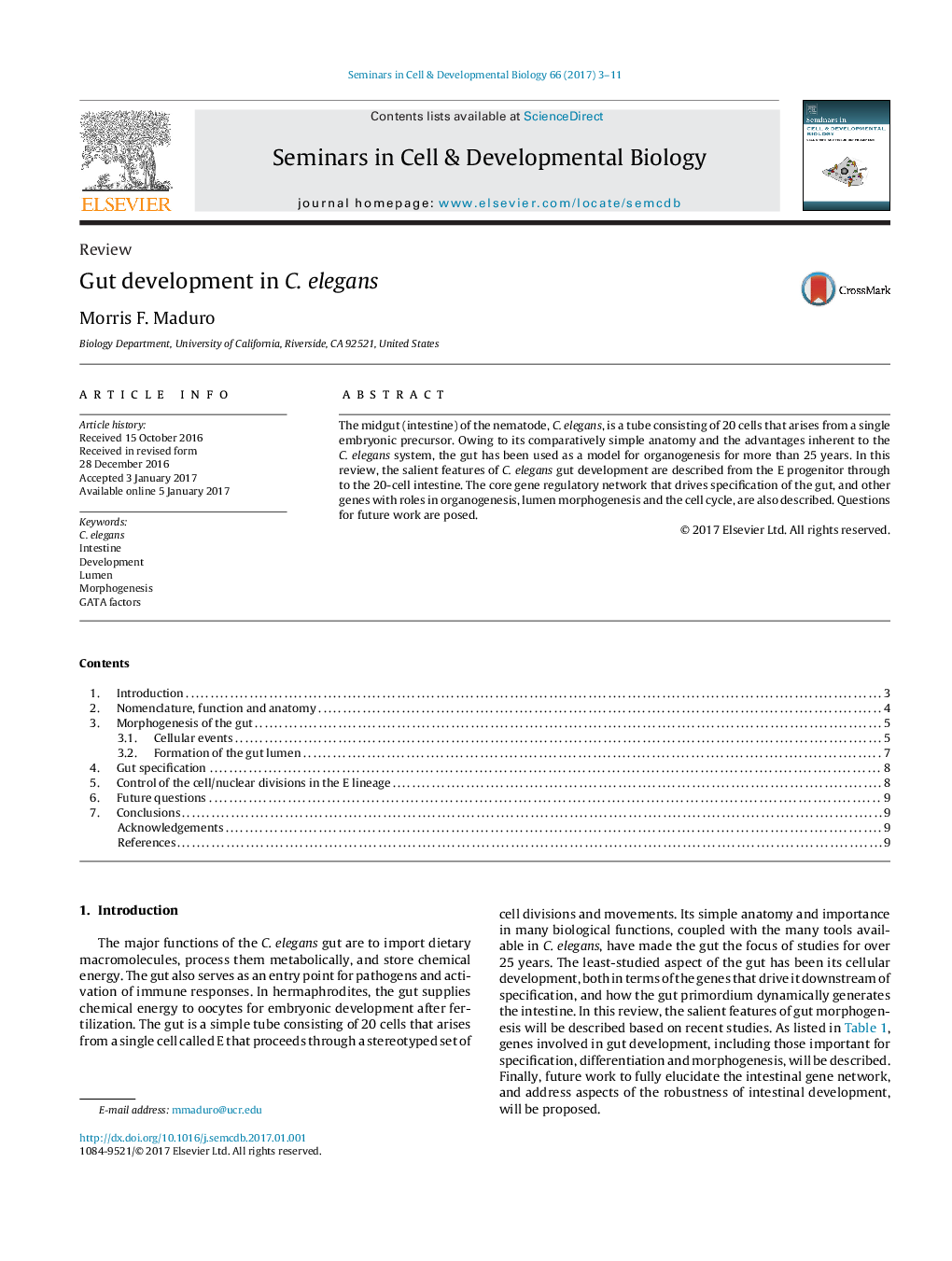| Article ID | Journal | Published Year | Pages | File Type |
|---|---|---|---|---|
| 5534877 | Seminars in Cell & Developmental Biology | 2017 | 9 Pages |
â¢The C. elegans gut is a simple 20-cell tube that carries out major digestive functions.â¢The gut arises from single cell through a stereotyped pattern of cell divisions and movements.â¢The core gene regulatory network driving specification involves a GATA factor cascade.â¢Recent studies have shed light on factors essential for proper lumen morphogenesis.â¢Ongoing work includes understanding differentiation and identifying robustness mechanisms.
The midgut (intestine) of the nematode, C. elegans, is a tube consisting of 20 cells that arises from a single embryonic precursor. Owing to its comparatively simple anatomy and the advantages inherent to the C. elegans system, the gut has been used as a model for organogenesis for more than 25 years. In this review, the salient features of C. elegans gut development are described from the E progenitor through to the 20-cell intestine. The core gene regulatory network that drives specification of the gut, and other genes with roles in organogenesis, lumen morphogenesis and the cell cycle, are also described. Questions for future work are posed.
Graphical abstractDownload high-res image (180KB)Download full-size image
